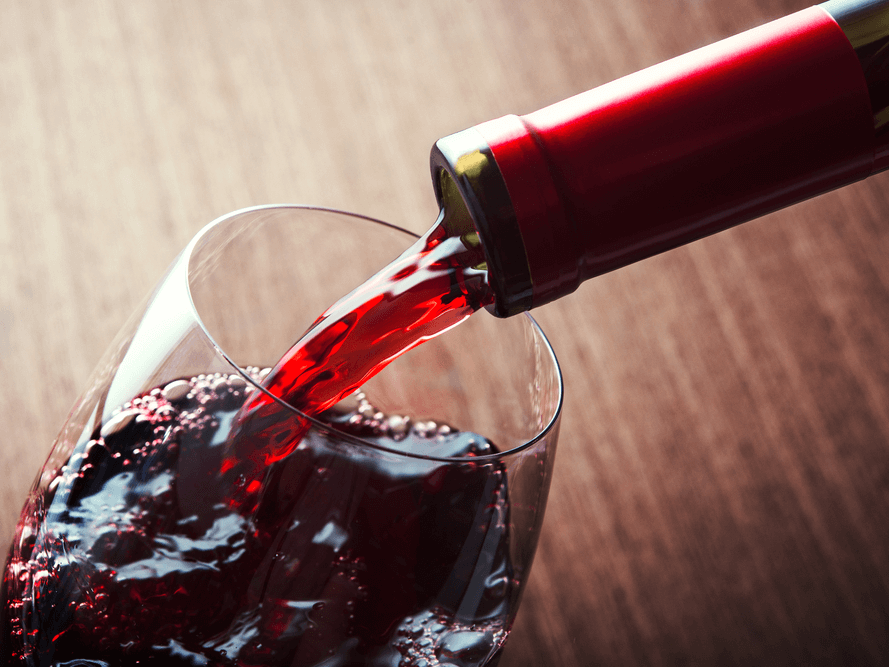You can use fumaric acid wine to stop malolactic fermentation. This helps your wine taste fresh. When you add about 600 mg/L of fumaric acid, you stop malolactic bacteria from breaking down malic acid. Tests show this keeps malic acid levels steady for months. You also lower the pH, which helps control bacteria. This keeps volatile acidity low. If you want to stop malolactic fermentation and keep acidity, fumaric acid wine gives you stable and bright results.

Fumaric Acid’s Role in Wine Fermentation
Inhibiting Malolactic Fermentation
Fumaric acid wine helps winemakers control malolactic fermentation. If you add between 150 mg/L and 1.2 g/L, it can stop this process. Using at least 300 mg/L works well, especially if the wine’s pH is low, like 3.8. If you use 600 mg/L, you can stop malolactic fermentation even after it starts, even with lots of lactic acid bacteria. This makes fumaric acid wine a strong choice for keeping wine fresh.
Here is a table that shows how much fumaric acid you need to stop malolactic fermentation:
| Fumaric Acid Concentration | Effect on Malolactic Fermentation | Notes |
|---|---|---|
| 150 mg/L | Limited inhibition | May not fully stop malolactic fermentation |
| 300 mg/L | Effective inhibition at low pH | Minimum dose for reliable results |
| 600 mg/L | Stops ongoing malolactic fermentation | Works even with high bacteria levels |
| 1.2 g/L | Strong inhibition | Used in special cases |
Tip: To make sure malolactic fermentation does not start after alcoholic fermentation, check and set the fumaric acid dose to 0.6 g/L. This keeps the effect strong, even if some fumaric acid is lost.
Scientists found that fumaric acid blocks the malolactic enzyme. This enzyme is needed for malolactic fermentation. When you add fumaric acid, you slow or stop this process. It does not hurt alcoholic fermentation, so yeast can still work. But yeast might use some fumaric acid, so you may need to add more to keep malolactic fermentation from starting later.
Preserving Acidity and Freshness
Fumaric acid wine helps keep wine bright and fresh. This is important for grapes from warm places. These wines often have high pH and low acidity, which can taste dull. Adding fumaric acid lowers the pH and raises the acidity. This makes wine taste more lively.
- Fumaric acid has a pKa of 3.03, so it is a strong acidulant.
- Sometimes it works better than tartaric acid, especially for high pH wines.
- If you use more than 0.36 g/L, fumaric acid slows malolactic fermentation, but tartaric and citric acids do not.
- Wines with fumaric acid have higher acidity and lower pH, which keeps them fresh.
- Taste tests show these wines are fresher and less oxidized.
Fumaric acid also helps keep the color and polyphenols in wine. This means your wine looks and tastes good for a longer time.
Enhancing Microbial Stability
Using fumaric acid wine makes wine safer from spoilage. Fumaric acid lowers the pH and stops lactic acid bacteria from growing. This helps control malolactic fermentation and lowers the risk of spoilage.
Here is a table that shows how fumaric acid affects bacteria:
| Aspect | Details |
|---|---|
| Target organisms | Lactic acid bacteria (LAB), Acetic acid bacteria (AAB) |
| Sensitive strains | Oenococcus oeni is highly sensitive to fumaric acid |
| Effect of pH/ethanol | Lower pH and higher alcohol make fumaric acid more effective |
| Biofilm formation | Fumaric acid stops bacteria from forming biofilms, especially at low pH and high alcohol |
| Practical implication | You can use fumaric acid with low pH and high alcohol to control bacteria and biofilms |
You can use fumaric acid instead of sulfur dioxide. This helps avoid taste and allergy problems from sulfur dioxide. Using fumaric acid keeps wine stable and fresh, even without extra chemicals.
How Fumaric Acid Influences Wine Fermentation
Acidifying Power and pH Impact
Fumaric acid can make your wine more acidic. When you add it, the pH drops fast. This acid is stronger than most others used in wine. It has a low pKa value, so you need less to get results. If you want your wine to taste fresh, fumaric acid is a good choice for acidification.
Sensory tests show that using 300 to 600 mg/L of fumaric acid does not give a strong acid taste. Instead, the wine feels brighter and fuller. The acidity is clear, but there are no odd flavors. Fumaric acid also helps keep the color and feel of your wine. This makes the wine look nice and taste fresh.
Tip: Pick fumaric acid if you want your wine to stay fresh and keep its acidity better than with other acids.
Antibacterial Effects in Wine
Fumaric acid helps stop bad bacteria during fermentation. It stops lactic acid bacteria from growing. This keeps your wine safe and stops it from spoiling. Fumaric acid works even in wines with high pH, where other acids might not help.
You are allowed to use fumaric acid for acidification and stabilization. Here is a table that shows the highest amounts you can use and the rules:
| Purpose in Winemaking | Maximum Allowed Fumaric Acid Concentration | Regulatory References |
|---|---|---|
| Correct natural acid deficiencies | 3.0 g/L (25 lbs/1000 gallons) | 27 CFR 24.182, 24.192; 21 CFR 172.350 |
| Stabilize wine | 3.0 g/L (25 lbs/1000 gallons) | 27 CFR 24.244; 21 CFR 172.350 |
Fumaric acid helps keep your wine safe from spoilage and keeps it tasting good. It is a strong way to control fermentation and protect your wine.
Practical Benefits of Using Fumaric Acid in Modern Winemaking
Quality and Sensory Improvements
Fumaric acid wine can make your wine taste better and last longer. When you add fumaric acid, it helps stop malolactic fermentation. This keeps more malic acid in the wine. The wine tastes fresh and lively. Fumaric acid also lowers the pH by about 0.05 to 0.1 units. This makes the wine more acidic and bright. Fumaric acid works better than tartaric acid, especially in warm places.
- Fumaric acid keeps wine stable by stopping lactic acid bacteria and acetic acid bacteria.
- You do not need as much sulfur dioxide because fumaric acid protects the wine.
- The wine stays fresh and stable for a longer time.
Most people do not taste much fumaric acid at normal levels. Some say the wine feels more acidic and has more body. The wine tastes clean and bright, which many people like.
Consistency and Shelf Life
You want your wine to taste the same every time you drink it. Fumaric acid helps make this happen. It stops unwanted fermentation after bottling. This means the wine will not spoil or change in the bottle. Fumaric acid also helps clear up wine if it has tiny metals. This makes the wine look clear and nice.
- Fumaric acid keeps wine stable by making it hard for bacteria to grow.
- Your wine keeps its fresh taste and flavor for longer.
- You can send your wine to other countries because fumaric acid meets world rules.
Note: The International Organisation of Vine and Wine (OIV) says fumaric acid is safe for wine. There are no strict leftover limits, so you can use it safely for export.
Alternative to Sulfur Dioxide
Many winemakers want to use less sulfur dioxide. Fumaric acid is a strong choice instead. It has the most acidifying power of common acids. It is safe and not toxic. You can use it to stop malolactic fermentation and keep wine from spoiling. Fumaric acid is also good for the environment because you use fewer chemicals and make less waste.
- Fumaric acid is cheap and easy to use.
- It works better and lasts longer than sulfur dioxide for stopping malolactic fermentation.
- You help the environment by using fewer chemical additives.
If you want wine that is modern, stable, and fresh, fumaric acid is a smart pick.
You can use fumaric acid to help control how wine ferments. It helps keep your wine tasting fresh.
- Fumaric acid can stop malolactic fermentation. This has been shown in studies with Malbec and Pinot noir.
- It helps keep the acidity in the wine. It also makes it harder for bad microbes to grow.
- Your wine will stay bright and stable for a longer time.
- You do not need to use as much sulfur dioxide.
Fumaric acid is a new way to make wine. It helps your wine taste fresh and last longer.
FAQ
What does fumaric acid do in wine?
Fumaric acid helps you stop malolactic fermentation. It keeps your wine fresh and bright. You can use it to lower pH and control bacteria. Your wine stays stable and safe.
Is fumaric acid safe to use in winemaking?
Yes, you can safely use fumaric acid. The OIV and FDA approve it for wine. You do not need to worry about harmful effects at allowed levels.
Can you taste fumaric acid in wine?
Most people do not notice any taste from fumaric acid at normal levels. Your wine will taste clean and lively. You will not get odd or sour flavors.
How much fumaric acid should you add to wine?
You should add between 300 mg/L and 600 mg/L to stop malolactic fermentation. Always check your wine’s pH and follow local rules.
Tip: Start with a small amount. Test your wine before adding more.
Does fumaric acid replace sulfur dioxide?
You can use fumaric acid to lower the need for sulfur dioxide. It helps keep your wine stable and fresh. You may still need a little sulfur dioxide for full protection.




